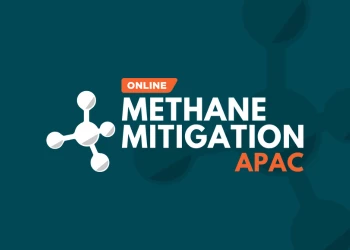Siemens on Why Sustainability is the New Business Imperative
Add bookmark
As sustainability becomes a high priority for investors, consumers and regulators, global manufacturers are looking to get ahead of the curve by reducing their carbon footprint. That’s because sustainability is not just an altruistic concern for the future, it’s also good business practice.
Siemens, a multinational technology company that provides industrial engineering solutions, has been pioneering new technologies and approaches to reducing carbon emissions.
“Being at the front of this transformation is necessary to do business in the future and being a leader in this space will help to grow your business,” observes Jenny Bofinger-Schuster, SVP for Sustainability and Operational Excellence at Siemens. “Sustainability is a business imperative, but it is also one of the greatest business opportunities for us.”
Siemens aims to become carbon neutral in its business operations and reduce emissions throughout its entire value chain by 20 percent by 2030. It’s not just its own carbon that the company seeks to reduce. Last year, according to Bofinger-Schuster, the technologies from Siemens’ Environmental Portfolio enabled the company’s customers to abate 88 million tons of CO2 by helping them saving time, energy, and resources.
In this interview, Bofinger-Schuster discusses the challenges and opportunities of decarbonizing business operations, explains why sustainability needs to become a mindset, and explores the role of technology such as digital twins and IoT to create the backbone of a new, low carbon economy.
Diana Davis, IX Network: I understand that Siemens has made big commitments to reducing its carbon footprint– can you describe what the company is doing?
Jenny Bofinger-Schuster, Siemens: For us at Siemens, we need to take action to fight climate change and that we are part of the solution. Ever since our founding back in 1847, we have been working on the biggest challenges of each time. This is in our very DNA, and we are proud that we have a strong track record in sustainability.
Back in September 2015, we became one of the world’s first global industrial companies to announce our intention to become carbon neutral in our operations by 2030. In early 2021, we set ourselves new reduction targets that were validated by the Science Based Targets-Initiative (SBTi). In this way, we want to make our contribution toward limiting global warming to 1.5 degrees Celsius. Based on the SBTi reduction pathway, we want to become carbon neutral in our business operations and reduce emissions throughout our entire value chain by 20 percent by 2030.
Diana Davis, IX Network: Of course, it’s one thing to aim to reduce carbon intensity and another to deliver it. What steps is Siemens taking to deliver on those commitments?
Jenny Bofinger-Schuster, Siemens: We are on a good trajectory to deliver on our commitments. In September 2020, we exceeded our interim goal to cut our CO2 emissions in half. The key driver to reduce our emissions is the integration of renewable energy as a foundation for our energy supply and increasing our energy efficiency throughout our operations.
Applying our own solutions and technologies is a key element in pursuing this objective. To tackle our scope 3 emissions, we jointly develop solutions with our partners to reduce the overall carbon footprint from our supply chain throughout the use phase of our products.
Transparency on the produced carbon emissions is key here. As part of our decarbonization program, we publish data on the upstream greenhouse-gas emissions produced by our suppliers. Since 2019, we’ve been working intensively on a process for determining our carbon footprint and for reducing emissions by establishing individual target agreements. We aim to achieve an emission-free supply chain by the year 2050.
Diana Davis, IX Network: Can you take us through your ‘DEGREE’ program? I understand that it’s the framework you use to guide your ESG efforts.
Jenny Bofinger-Schuster, Siemens: When developing the DEGREE framework, the initial thought was about the sustainable impact of a company. It is more than profit and it is also more than the number of saved CO₂-emissions. Equally relevant is how many jobs we create, how we engage socially, and how we ensure that we act ethically and for the long term. How do you create benefit and value for all stakeholders – for our customers, for society, for our people and our planet.
That is the idea behind our new sustainability strategy DEGREE. It is called DEGREE, because when you speak about sustainability, you need to take a 360-degree perspective – considering all stakeholders and the impact each decision has on the different areas, which are all equally important. Each letter in DEGREE stands for one of the areas that we believe matter most. With DEGREE, we are setting ourselves new, ambitious targets, transparent and measurable - underlining our commitment to sustainable action.
The letter "D" stands for "decarbonization", maybe the biggest challenge that we all together face today. The second letter comes "E" for "ethics" – which includes more than the obligation to regularly train people in our values and ethical standards. For us, ethics is closely related to trust. This includes the digital world as well, which is why we founded the Charter of Trust initiative, to drive cyber security in a trusted digital world with cross-industry and global partners. "G" and "Governance" is where it's about how we integrate effective incentives for strong corporate governance and responsible business practices into our organization, and how we make working with our 63,000 suppliers worldwide ESG-compliant.
"R" stands for "resource efficiency" – here we want to develop more strongly towards a circular economy and drive the dematerialization in our production. This includes significantly increasing the purchase of secondary materials for metals and plastics and making our products as environmentally friendly as possible right from the start, also with the help of digital twins.
Looking at "equity", you may first associate it more with the financial world; we understand this to mean equal treatment, participation, and respect. For us it really means that we want to have a feeling of belonging for our people. We want to promote a culture that empowers and encourages people to develop. The last "E" stands for "Employability" – for how we can strengthen people in terms of resilience and relevance and secure their employability in the long term: with training and further education, digital learning opportunities or a defined number of learning hours.
Diana Davis, IX Network: Do you have a concrete example you can share of some of the work you’ve done and what it has achieved?
Jenny Bofinger-Schuster, Siemens: The biggest lever for Siemens to reduce carbon emissions is helping our customers achieve their sustainability goals, using our technology and innovation. Here, we build on a strong record, the technologies from Siemens’ Environmental Portfolio enabled the company’s customers to abate 88 million tons of CO2 – ten percent more than in fiscal 2020.
Using technology, for example our digital twin to simulate and optimize products and processes, we help our customers on their journey to save time, energy, and resources. The machinery manufacturer Trakrap in the UK used our Digital Twin Technology to implement a new packaging technology, with impressive results: energy consumption went down by 90% and 70% less plastic is used when making film packaging for bottles. This shows what we can achieve with our digital solutions.
Or our cooperation with Mercedes-Benz, where we jointly advance digitalization in the field of engineering and sustainable production methods. This will support Mercedes-Benz in meeting the challenge of building CO2-neutral factories, while also becoming more flexible and integrating Information and Operational Technology in a new work environment.
Simplified software development with low-code platforms such as our Mendix will enable the up- and reskilling of white- and blue-collar workers with future proof skills and competences. We are supporting our partner here not only to accelerate their decarbonization efforts, but also strengthen the long-term employability of their people.
Diana Davis, IX Network: How do you achieve real results with sustainability and change the way the company operates rather than being just a box ticking exercise?
Jenny Bofinger-Schuster, Siemens: It is about changing the mindset and seeing sustainability as one of the biggest transformations that companies, industries, and whole societies must undertake. Being at the front of this transformation is necessary to do business in the future and being a leader in this space will help to grow your business. Sustainability is a business imperative, but it is also one of the greatest business opportunities for us.
Our 300,000 employees at Siemens, who are designing and creating products, planning, and implementing solutions every day, can have a tremendous impact following this mindset in their everyday work, interactions, and decisions. That’s not even including all the people they influence; there can be a tremendous impact if everyone follows this mindset. We, at Siemens, transform the everyday for billions of people.
Sustainability needs to be integrated in the overall company strategy, making long term ambitions and sustainable goals part of your business decisions and create a purpose for your company and for your people to follow. Creating this purpose and the environment for our people to follow our ambitions is part of our leadership culture.
Diana Davis, IX Network: What role do data and technology play in helping with sustainability efforts?
Jenny Bofinger-Schuster, Siemens: To accelerate our sustainability efforts, we must transform the backbone of our society: industry, infrastructure, mobility, and healthcare. Technological progress has always been a key lever for economic and societal growth, and – if used in the right way – will continue to do so.
Together with our partners and customers, Siemens is leading the sustainable transformation by applying technology with the goal to generate value for all stakeholders and whole societies, while consuming fewer resources. We call this “Technology with Purpose”.
We at Siemens use technologies which combine the real and the digital worlds to deliver on these ambitious goals, using the vast benefits of IoT to increase the efficiency of existing or to develop completely new, sustainable processes. Be it in the fields of energy, water, industry, materials, or infrastructure, IoT can help us drive decarbonization and enable a circular economy.
Let me share an example: Decarbonizing the industrial value chain is key to reduce global carbon emissions. Many companies are setting ambitious goals here for their own operations, but about 70 - 90% of a product’s carbon footprint are emitted outside these own operations in the upstream and downstream activities (scope 3). And companies struggle to quantify these emissions and the impact they have on the entire value chain.
Siemens launched a new solution, SiGreen, to efficiently collect actual, primary data, track a products’ carbon footprint throughout the entire supply chain and identify exactly where to improve and also quantify this positive impact on the products’ sustainability. This is an example of how technologies which combine the real and the digital worlds can improve the world for the better.
Diana Davis, IX Network: What are your priorities for the year ahead?
Jenny Bofinger-Schuster, Siemens: At our Capital Market Day in June 2021, we set ourselves ambitious ESG targets with our new strategic framework DEGREE. Since then, we have made solid progress with respect to our 14 ESG ambitions and have already made substantial headway toward realizing about one-third of them.
Advances were made, for example, in the ESG requirements for our suppliers and in the share of women in top management. The focus in 2022 is clearly on the further implementation of our targets and to accelerate the biggest impact we must create a better tomorrow: through our customers and their operations.
We will be scaling up the solutions which are already available today, further supporting our customers all around the world to overcome their sustainability challenges and developing new, innovative technologies which can transform the industries that form the backbone of our economies.


















